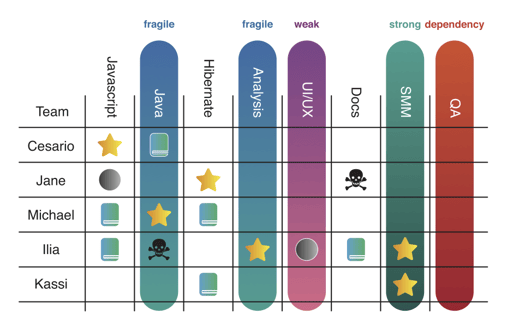
Scrum planning insights
I joined MainConcept in March 2022 as their lead Scrum Master. Having been a trained Scrum Master for several years and holding similar roles at other companies, I was pleasantly surprised by the maturity and openness of my new colleagues, in their eagerness to embrace my vision of Scrum within MainConcept.
In the hopes of benefiting other organizations, I wanted to share my observations upon completing a full year, over 30 sprints, in the role!
Clearly define the sprint goal
This might seem obvious, but it is not always the case. While the MainConcept team did an above average job at definition, after one-on-one conversations with several developers, a few areas for improvement were identified.
- Set goals during planning (as it should be according to Scrum guidelines). This takes time and practice. At first, discussions may not always be fruitful, goals may not be formulated clearly, consensus may not happen as quickly as desired.
- Goals and results are interlinked. Sprint results were not always discussed at the sprint review - the results were not ready. We quickly concluded the goal for the sprint needed to be redefined or expanded so results better apply.
- Once the goal is adjusted, stick to it. This ensures developers focus in not scattered and the most important tasks are delivered to stakeholders on time.
The presence of the sprint goal guided the work during the sprint. Important tasks were closed first and by the end of the sprint, critical tasks were ready, bringing needed value to stakeholders and the product. As a result, after 15 two-week sprints across three teams, we had 44 formulated goals. Of those, 12 were missed for various reasons (an urgent bug, a change in priorities, etc.). However, that resulted in a 74% success rate in achieving sprint goals, which I consider a success after a little more than half a year in the role.
Ensure the product demo is meaningful
The next positive impact came when we adjusted the format of how sprint results were demonstrated. Historically, this was done as a discussion only and many times took longer than needed to communicate results. I knew this could be improved and set out to study industry best practices as well as interview internal stakeholders. Upon presenting my findings, the team agreed that adding visual tools, primarily graphs and charts, would go a long way towards optimizing the demo review.
It became clear during the first meeting following this format that we had a success. There were more questions than usual, the feedback was better, and there were more topics discussed based on the sprint results.
Make use of StarMap
Another improvement implemented at MainConcept, which was even discussed during my interviews, is StarMap. This exploration was not limited to only my team, rather included an expanded group of participants. For this, I gathered the necessary skills for each team member (through surveys) and grouped the skills into areas. Next, to help with objectivity, developers from another team created the competency matrix. It turned out to be a convenient, but capacious tool.

Sample StarMap from scrum.org
The tool was then tested, filled out by my teams. After the matrices were completed, individuals were able to see the gaps in competencies. Based on the feedback, I selected various training programs (paid and free) for our developers to build up the identified skills.
We also recently introduced mentoring, using the StarMap matrix to find people who understand the technology to offer them mentoring (mentoring is also one of the internal innovations introduced over the past year).
Adapt
One of the pillars of Scrum is adaptation, which is not possible without feedback. We are now defining how best to provide feedback to development teams, showing how and what was affected across one or many sprints. Such feedback motivates us to continue innovating our products, to understand that the work done during one sprint is not isolated to just that one sprint. Every day spent at work brings benefits and makes the product, the company, and the developers themselves better and more experienced.
As it looks, my first 15 months at MainConcept have been quite productive, adding a new layer to the project management process. In this time, I have enjoyed both educating and learning from my colleagues. I can’t wait to see what the next year has in store.
Scrum managers, I would love to hear what improvements you have implemented in your teams.



